Khaled al-Jeratli | Hassan Ibrahim
Since the uprooting of the Islamic State from northeastern Syria following a massive US-backed military campaign in 2017, the strategic and oil-rich region has turned into a microcosm of the interaction of the conflicting forces internationally, with various local tools, including Iranian-backed factions west of the Euphrates River, and US-backed ones east of the river.
While the region is witnessing constant tension between Russia and the United States due to violations of the air deconfliction protocols between the two parties, military build-up is taking place for America’s allies on the eastern bank of the Euphrates, and for Iran’s allies on the west bank.
All happens amid local reports about a possible military operation that has not been confirmed, with Western press leaks indicating Iranian preparations to attack US bases in the region.
On the other hand, and in conjunction with the tension in the relationship between local forces in the US sphere of influence, talk of the “tribal belt” project has returned to the fore, and analysts have differing opinions regarding its applicability.
In this file, Enab Baladi discusses with researchers and analysts the repercussions of the military build-up on both sides of the Euphrates, and the possibility of the parties clashing, amidst talk of US changes in the military structure in the region.
Mobilization, expected escalation
Over the past days, the US-backed Syrian Democratic Forces (SDF) sent military reinforcements to the eastern bank of the Euphrates River, east of Deir Ezzor governorate, consisting of armored vehicles belonging to the Special Task Forces (Commandos) and others from the al-Sanadid faction.
In conjunction with the military changes carried out by the SDF in the east of the governorate, there was talk of upcoming confrontations between the US-backed faction and the Iranian militias that control the western part of the river.
While the SDF’s media center denied the Kurdish faction’s intention to launch military action against the regime forces and their allied Iranian militias, the commander of the Deir Ezzor Military Council affiliated with the SDF talked about a military operation targeting the villages of Deir Ezzor west of the river, which are al-Husayniyya, al-Salihiya, Hatla, Marat, Tabiyat Jazirah, Mazloum and Khasham, all of which are located east of the Euphrates River.
Osama Sheikh Ali, a researcher on Kurdish affairs at the Omran Center for Strategic Studies, told Enab Baladi that the military build-up east of the Euphrates began after US press reports that Iranian militias were preparing to attack US bases there.
The military build-up was not limited to one side, but the Iranian side also began mobilizing on the opposite bank of the river, and the Syrian regime also pushed its forces to the same area, accompanied by heavy weapons.
Sheikh Ali added that meetings were held between some factions in northeastern Syria and the military forces present in the al-Tanf garrison, under the US supervision, to form a military faction from the tribesmen of the eastern region.
The reports about the local military formation that Washington might support in eastern Syria came after US leaders visited the areas of the al-Sanadid Forces east of al-Hasakah region (an armed group formed by Shammar tribesmen).
Sheikh Ali added that the US plan, centered on the formation of the new faction, is working to create an Arab tribal belt to cut off the road to the Iranian militias, starting from the east of the Euphrates, passing through the city of al-Bukamal, east of Deir Ezzor, and reaching the al-Tanf base in the Badia region on the Iraqi border.
On June 1, The Washington Post revealed, based on intelligence officials and leaked classified documents, that “Iran is arming militants in Syria for a new phase of lethal attacks against US troops in the country while also working with Russia on a broader strategy to drive Americans from the region.”
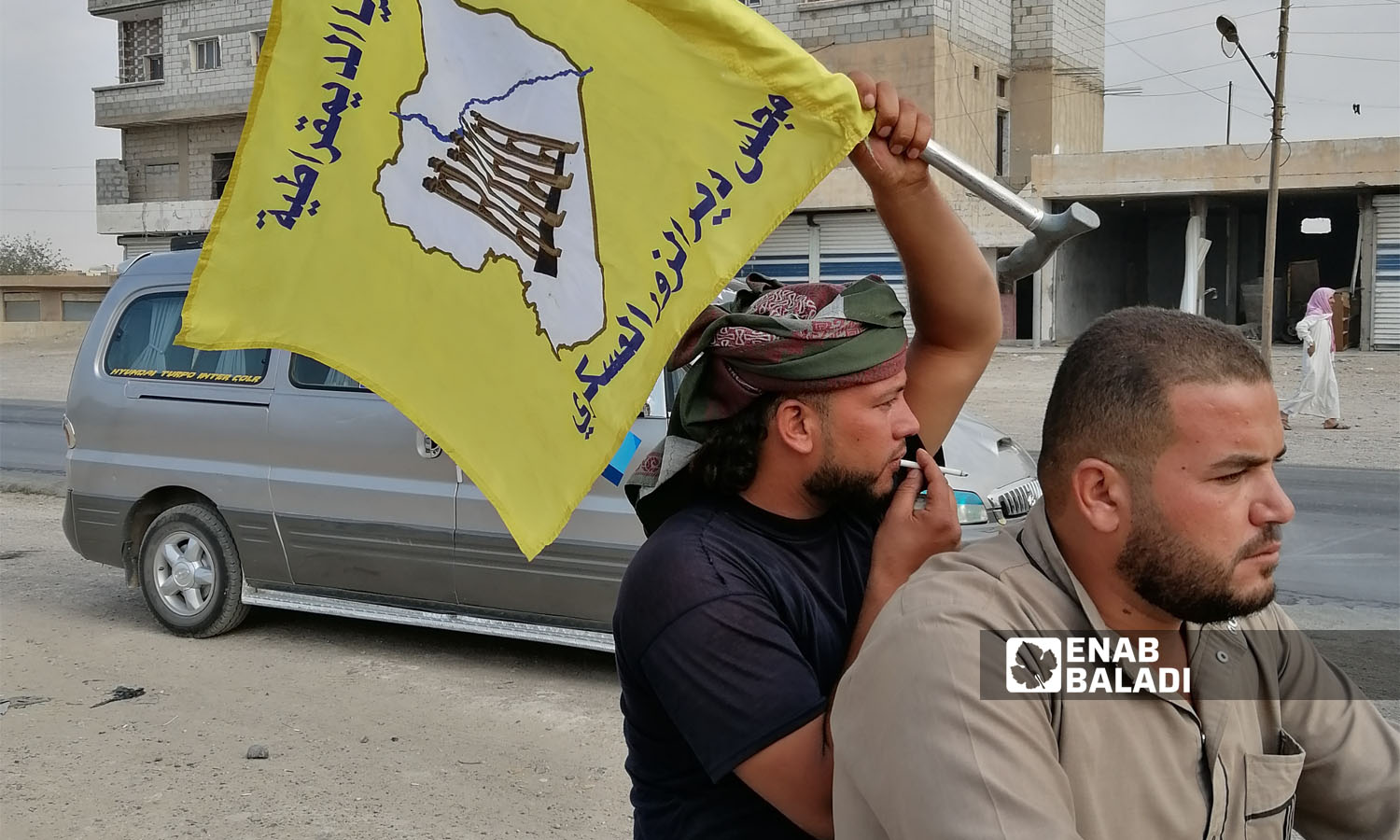
Members of the Deir Ezzor Military Council in the town of Jadeed Akidat, east of Deir Ezzor (Enab Baladi/Obada al-Sheikh)
Internal discords
With the continued arrival of military reinforcements from the SDF to the eastern countryside of Deir Ezzor, specifically to the lines of contact with the Syrian regime on the western bank of the Euphrates River, an audio recording of the commander of the Deir Ezzor Military Council, Ahmed al-Khabeel, was circulated, in which he shed light on an internal dispute between his faction and the central command of the SDF.
In addition to the internal disputes that al-Khabeel referred to, he talked about disputes between the clans of the eastern region, including his Bakir clan, according to a separate leak recording days before the first one.
Al-Khabeel expressed his rejection of the presence of a “High Commissioner” from the SDF in Deir Ezzor, likening the SDF policy in the region to the policy of the “French occupation,” and indicated that the governorate, which has a tribal nature, is governed only by its clansmen.
It was stated in the recordings that the Deir Ezzor Military Council faces two enemies, the first is internal, represented by some SDF leaders and the Islamic State group, and the other is external, which is Turkey and the Syrian regime.
Al-Khabeel pointed out that his forces are in full mobilization to confront his internal and external enemies on the military level.
Enab Baladi contacted the media center of the Deir Ezzor Military Council to obtain information about these developments, but the Council refused to make any statements.
Muzahem al-Salloum, former media spokesperson for the Joint Task Force formed by the International Coalition, commented on his personal Facebook account on the news about military action, considering that the talk about reinforcements to liberate new parts of Deir Ezzor governorate from the Syrian regime is false allegations.
He added that military convoys were gathered in the region to launch a campaign targeting armed local militias and other tribal groups in Deir Ezzor governorate.
Al-Salloum indicated that the main goal of these moves is the SDF’s desire to seize the wealth and resources of Deir Ezzor.
US-Russian-Iranian tension
On July 14, CNN quoted a senior US defense official as saying that a “Russian surveillance aircraft flew above a US base in Syria for an extended period of time on Friday morning in what officials deemed an intelligence collecting mission.”
Al-Monitor website revealed on the same day, July 14, that “Russia is trying to squeeze the US out of Syria’s airspace while the IRGC continues to flow weapons used to attack US bases into the country.”
“Russian combat pilots have dialed back a recent wave of threatening armed flights over US bases in Syria since the Pentagon deployed stealth F-22 fighter jets to the region in order to ward them off last month,” a senior US military official said.
The Russian political researcher, Dmitry Bridzhe, believes that Russia has understandings with Israel and other Arab countries in the region based on curbing the militias formed by Iran in Syria, which reduces the chances of a clash between the major powers in Syria.
For his part, analyst Osama Sheikh Ali considered that Iran is trying to break the long period of calm that has prevailed over several files of concern to it.
Sheikh Ali added that the file of the Iranian nuclear negotiations, the file of the US intervention in Iraq and the political impasse in it, in addition to the stopping of the gas pipeline from Iran to Iraq, have shifted their settlements to the Syrian arena, where messages can be delivered between the parties.
The Iranian-US tension is not new to the oil-rich region, as cases of mutual shelling are frequent between pro-Iranian militias and US military bases in eastern Syria.
However, US-Russian tension has been added to it recently due to air violations in which the two sides exchange accusations.
In a previous interview with Enab Baladi, Teresa L. Sullivan, a Public Affairs Officer in the US Central Air Force (AFCENT), said that the US-led International Coalition forces and the Russian forces in Syria have well-established and agreed-upon protocols to prevent conflicts between the two sides’ operations.
Russian aircraft have been operating in Syria for some time in an “unsafe and unprofessional” manner, added Sullivan, who considered that Russia intends to carry out “aggressive maneuvers” and to commit non-deconflicted incursions into the areas of US army operations with increasing frequency.
On the other hand, Russia has repeatedly said officially that the US Air Force pilots “violate the deconfliction protocols in Syria,” according to Admiral Oleg Gorinov, deputy head of the Russian Center for Reconciliation in Syria.
Gorinov stated to Russia Today (RT) channel that American pilots activate the weapon systems when they approach Russian Air Force planes in Syria.
May the parties collide?
Military build-ups are still continuing on both banks of the Euphrates River, and they began in conjunction with US military exercises with local allies in northeastern Syria.
On July 4, the US Joint Task Force in Syria announced “conducting aerial operational exercises in or near the al-Hasakah and Deir Ezzor regions to validate weapons systems and maintain crew proficiency and readiness.. to support our partner forces.”
The exercises came one day after the end of similar maneuvers at the US al-Tanf garrison on the Iraqi-Jordanian-Syrian border in eastern Syria.
On the same day, the Joint Task Force announced “a controlled detonation of unserviceable munitions in or near the Deir Ezzor region.” adding that “Extensive planning and proper safety measures are taken before and during controlled detonations in order to protect the Coalition and the local population.”
Russian analyst, Bridzhe, believes that the possibility of a military clash between the parties is out of the question, even if field indicators say otherwise, and it is likely that the situation will be limited to competition and skirmishes.
Omer Ozkizilcik, a Turkish analyst focusing on the Syrian crisis, ruled out a clash between Russia and the United States in Syria, as he believes that neither side has an interest in escalating matters in Syria.
Ozkizilcik added that Russia is preoccupied with Ukraine, and the United States has no policy for Syria except to maintain the status quo, and therefore a clash will not occur.
If this happens, the land road linking Tehran to Beirut, passing through Syria and Iraq, will be cut off. This means that the lifeline that feeds Iran’s militias in both Syria and Lebanon will be cut off, according to the Turkish analyst.
For his part, the writer and analyst on Iranian affairs, Marwan Farzat, believes that the possibility of a clash is unlikely, especially with the Iranian awareness that the eastern region in Syria is its “soft side,” even though it has sought for years to enhance the capabilities of its military arms in Syria and Lebanon with a large number of weapons, missiles, and drones.
Moreover, Iran transferred to its arms part of the technologies for manufacturing some of these weapons so that they would be able to maintain their existence even in the event that Iranian support for them ceased, according to Farzat.
The US Central Command did not answer questions asked by Enab Baladi about the military movements taking place in the region.
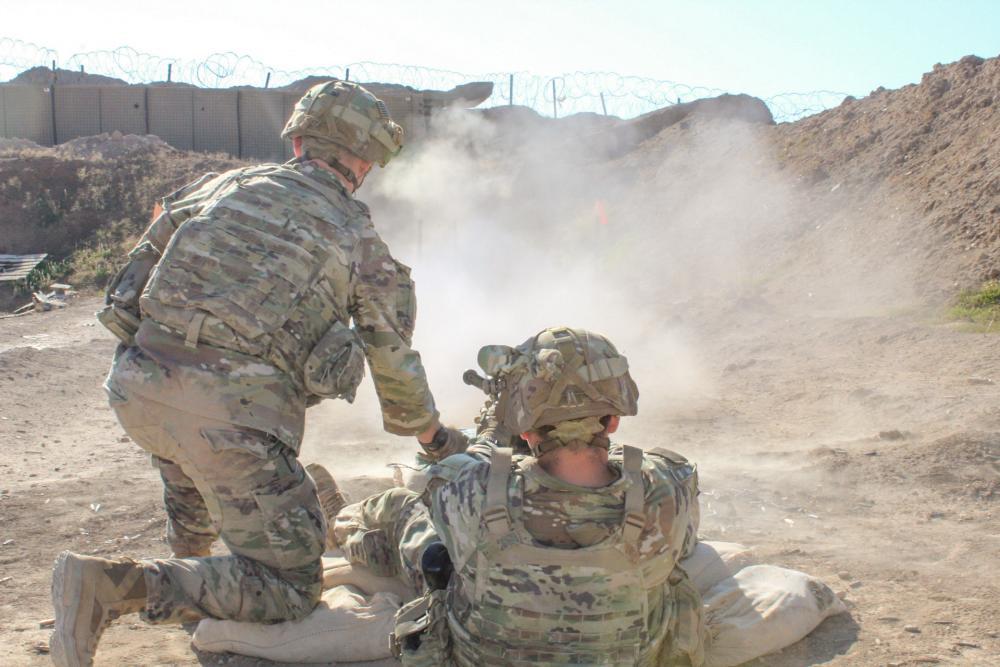
Military exercises for American soldiers on anti-aircraft weapons – January 3, 2022 (Operation Inherent Resolve)
The Tribal Belt
Talks about the “tribal belt” project, and an American desire to change the situation in line with the needs of northeastern Syria, including strengthening Arab representation, are hampered by obstacles, according to the Kurdish affairs expert, Osama Sheikh Ali.
He believes that supporting the Arab component in the region or forming an Arab faction at the expense of the Kurdish administration east of the Euphrates is “far from implementation,” as there is no American desire to invest in a new military faction, especially since Washington sees the SDF as a successful experience.
However, the option of putting pressure on the SDF to expand Arab participation is a likely possibility. What is meant here is to support some Arab factions within the SDF and under its umbrella and not to establish a new military faction outside the framework of the faction that controls the region as a whole.
The joint military maneuvers between the US forces and their “local partners” in northeastern Syria stirred the stagnant waters of an American project represented in arming a number of Arab clans, forces, and factions.
Starting from along the border triangle between Syria, Jordan, and Iraq in southern Syria, all the way to the Iraqi-Syrian border and the extension of the Badia, the project is known as the “tribal belt” in eastern Syria.
An American project that has not been confirmed by any official source. It is repeatedly raised with any political movement, visits, or meetings of American personalities with the tribal component or old Arab factions to revive their role and implement the “Belt” project.
Talk about the project has returned to circulation and the media interface recently through a research presented by the former leader who defected from Hayat Tahrir al-Sham (HTS) in Idlib, Saleh al-Hamwi.
Al-Hamwi considers that the project has reached the implementation stage, while the project’s first spark came after a report issued by the US Department of Defense in March 2020, which criticized the exclusion of the Arab component from decision-making joints within the military and civil institutions of the Syrian Democratic Council (SDC), the political wing of the SDF.
Since 2020, the project has been presented in the media with every American move in the region, the most recent of which was last January after a US delegation visited the Raqqa Revolutionaries Brigade at the headquarters of the 17th Division and its meeting with its commander, Ahmed Alloush (Abu Issa), with news circulating about sending American weapons and equipment to the Division’s headquarters.
What is the project?
There is no unified wording or clear draft of the American project, but the outlines circulated informally focus on a number of points, namely:
– Formation of a Sunni Arab tribal force from the Arab formations formed with the SDF.
– Adding new clan formations.
– Changing some of the leaders adopted by America in the countryside of Deir Ezzor.
– Changing some names, such as the “Deir Ezzor Military Council,” and the possibility of merging it with the new formations.
– Linking and coordinating between the forces and the al-Tanf base.
The US Central Command (CENTCOM) did not answer questions asked by Enab Baladi about the project.
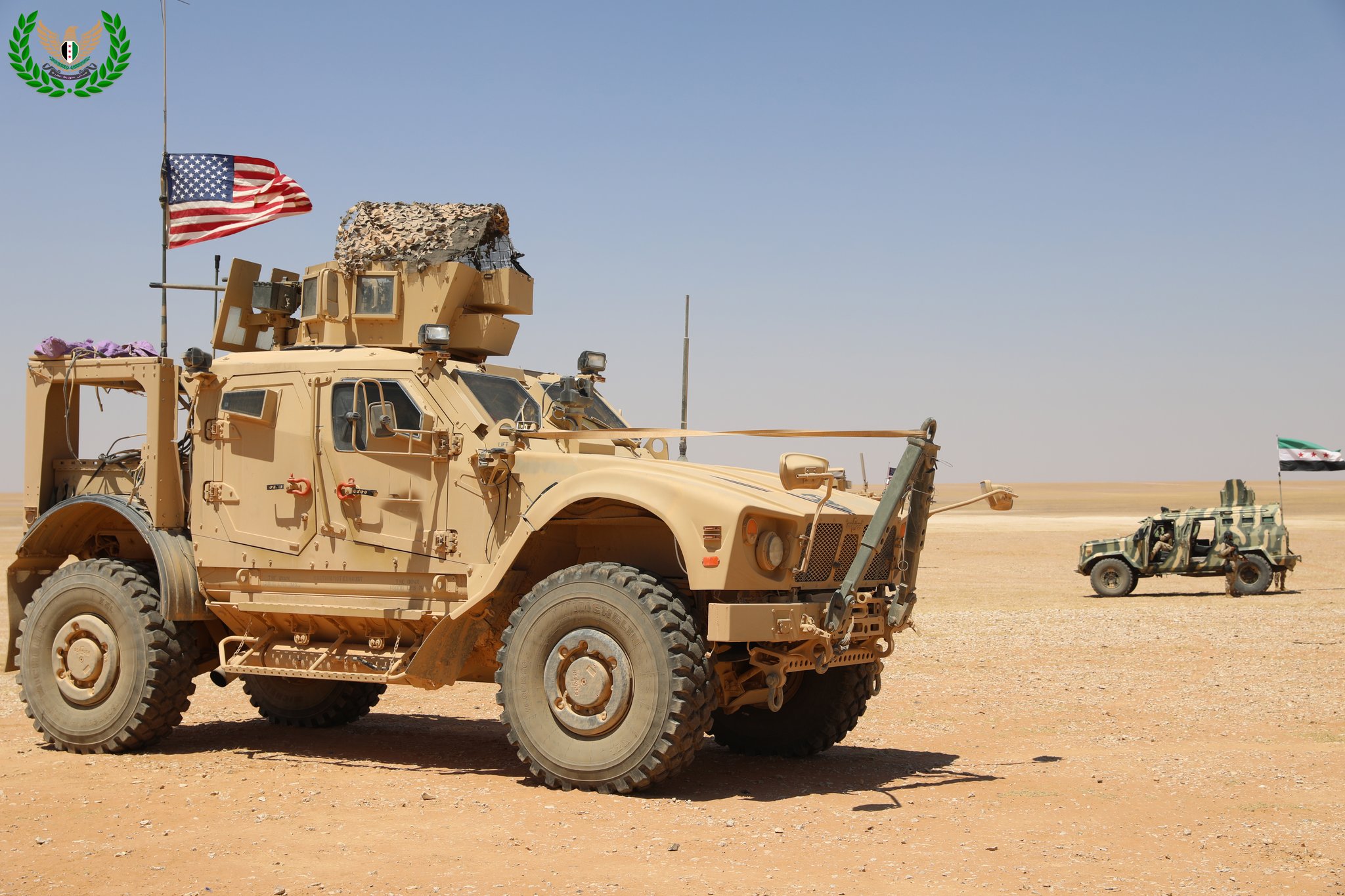
The Free Syrian Army and American forces in the al-Tanf area in southern Syria – July 4, 2023 (Free Syrian Army)
The “belt” project collides with Iranian corridor
Despite the clarity of the provisions of the “tribal belt” project, which did not officially see the light from Washington, it targets a complex geographical area that Russia, Iran, the US, and even Turkey share control over.
Powers have their declared and implicit goals, and the implementation of such a project could change the map of influence in Syria.
In terms of the forces of influence in eastern Syria, Iran is at the forefront of the scene, and the cities of al-Bukamal and al-Mayadeen, east of Deir Ezzor, are the military weight of Iranian forces and militias present in the region since the Syrian regime took control of it with Iranian-Russian support in 2017.
Iran’s presence in the eastern region is part of its goal of establishing a “Tehran-to-Mediterranean” corridor, as it had previously planned to reach through the al-Tanf region in southern Syria. However, the entry of the Coalition Forces shuffled the cards and turned its sights towards al-Bukamal to avoid approaching the positions of the US forces.
On the other hand, several American bases are spread in eastern Syria, extending along the border strip adjacent to Iraq, and the past months have witnessed an escalation between the two parties that reached mutual targeting last March.
At the direction of US President Joe Biden, US Secretary of Defense Austin Tice authorized the Central Command forces to launch precision strikes against facilities used by groups affiliated with the Iranian Revolutionary Guard Corps.
The security tensions came at the time in response to the killing of a US contractor and wounding six others in a drone attack that targeted a maintenance facility at a coalition base near the al-Hasakah governorate in northeastern Syria, according to the US Department of Defense.
“Iranian-backed militias in Syria were responsible for the drone attack on the coalition base near Hasakah in northeastern Syria,” the Pentagon said.
Iranian affairs expert, Farzat, told Enab Baladi that Iran will not easily abandon this strategic region of Syria, as there is the Imam Ali base, which is one of the largest and most important Iranian bases in the region, and other important bases.
Farzat added that, during the past months, Iran has provided its bases and militias with a large number of suicide drones and a number of short-range missiles.
|
Iranian arms can easily hit American bases and cause losses to soldiers, and Iran is betting to embarrass the Biden administration in front of public opinion and the American street. Marwan Farzat, Expert in Iranian affairs |
Orabi Orabi, a researcher on Syrian affairs, considered that the idea of the American project is still present, but it has not yet matured, and it can be considered an alternative plan B and C, pointing out that the main project in eastern Syria aims to empower the SDF administratively and militarily.
Orabi told Enab Baladi that the “tribal belt” project requires an internal, external, and regional context in order to be achieved, ruling out Iran’s withdrawal and retreat from the eastern region.
There is a possibility of a state of understanding and a long-term truce between Iran and America, with the likelihood that Iran will not adhere to this matter, according to the analyst.
SDF is a stumbling block
The “tribal belt” project and the revival of the marginalized clans’ role in eastern Syria correspond to another project carried out by the Autonomous Administration of North and East Syria (AANES) and its military wing, the SDF, by establishing an independent entity or self-rule.
With the establishment of an independent entity or self-rule and with the return of this file to the fore, attention is directed towards the SDF and its position.
The Turkish analyst, Ozkizilcik, said that investing in the Arabs of eastern Syria is considered an “auspicious and easy” project, and it is more than feasible.
But the team of Brett McGurk and the US Central Command is the one who makes the decisions of the American policy in Syria, and this team sees the People’s Protection Units (YPG), which is the nucleus of the SDF, as their partner.
Ozkizilcik added to Enab Baladi that the core of the project came from the corner that the US has driven itself into, as the partnership with the YPG led to the isolation of the United States in Syria.
If this policy continues, the United States will eventually withdraw from Syria and give Iran and Russia victory, according to the Turkish analyst.
|
If the United States does not decide to decouple from the YPG, any project to invest in Arabs or alternative Syrian Kurdish entities will fail. Omer Ozkizilcik, a Turkish analyst focusing on Syria |
From the perspective of local dynamics, Ozkizilcik believes that the YPG does not allow for an alternative, as the Arab Raqqa Revolutionaries Brigade (Liwa Thuwwar al-Raqqa), which was an ally in its war against the Islamic State group, was previously dissolved, and the governance structure imposed by the YPG on local tribal Sunni Arabs is seen as “outsiders.”
An approach with Turkey is needed
The US policy in Syria is not compatible with several parties and forces present in the region, most notably Turkey, which is hostile to the SDF.
Turkey has previously launched three military operations against the Kurdish forces with the Syrian National Army (SNA) in northern and northeastern Syria.
The borders of Turkish influence are adjacent to the areas controlled by the SDF, and it is affected by any project that takes place in the region.
Ozkizilcik said that the establishment of an armed structure of local tribal Sunni Arabs in the SDF-held areas requires a force to confront the YPG.
This force can only be Turkey and the Syrian National Army (SNA), and in the event that America does not cooperate with Turkey in establishing a common approach towards Syria, these attempts cannot succeed, said the analyst.
A report by the American think tank Hudson Institute has recommended six steps to succeed in unifying Turkish and American spheres of influence in Syria and revitalizing the partnership in relations.
The report was prepared by Ozkizilcik and the Hudson Institute fellow, Michael Doran, a former official in the US National Security Council who specializes in Middle East affairs.
The most prominent of the six steps was the evacuation of the YPG from the regions of Deir Ezzor in northeastern Syria by separating the Deir Ezzor Military Council from the SDF, evacuating the YPG from the al-Hasakah governorate, engaging Russia and avoiding confrontation with it, and cutting off the Iranian supply corridor.
if you think the article contain wrong information or you have additional details Send Correction
النسخة العربية من المقال
-
Follow us :












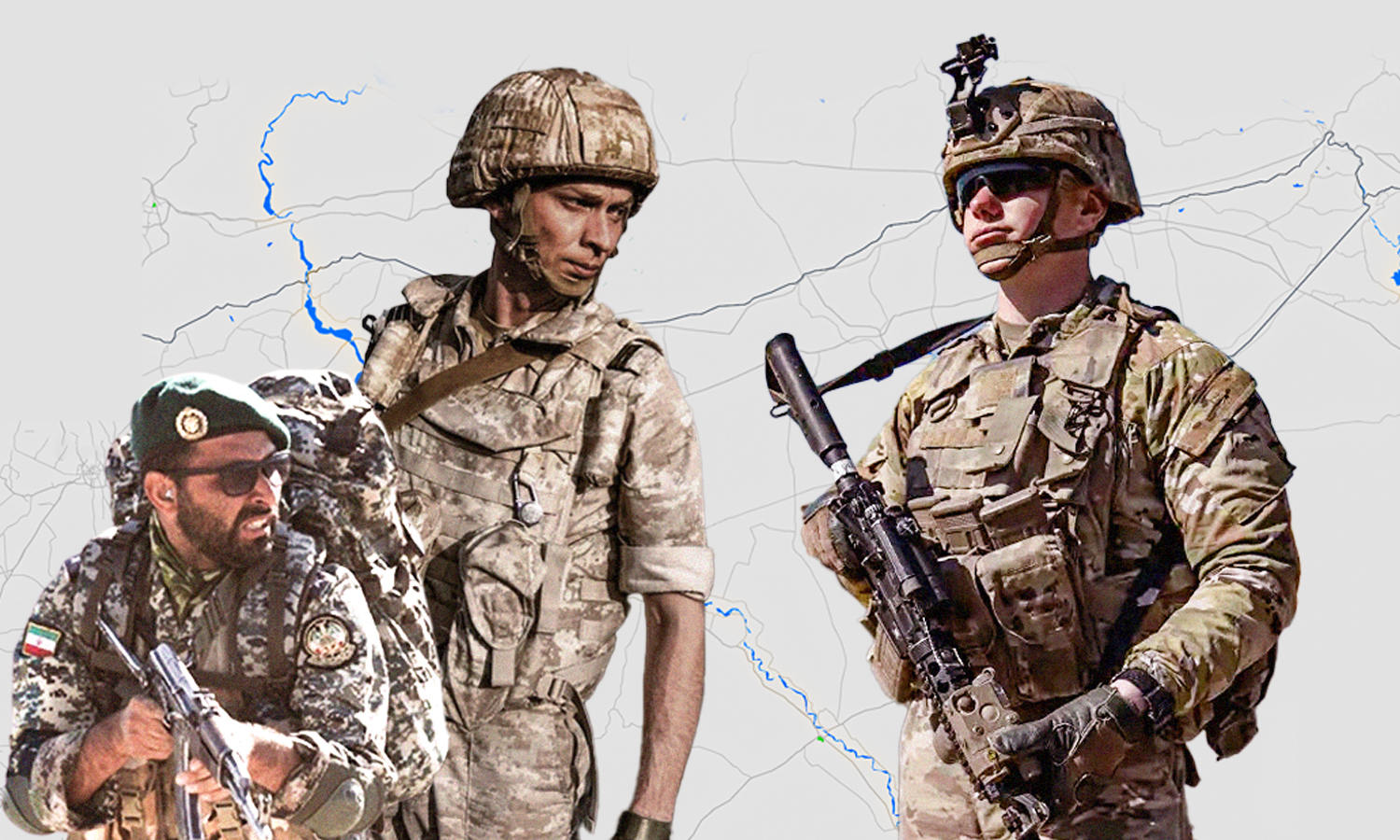
 Russian, US, and Iranian soldiers (Edited by Enab Baladi)
Russian, US, and Iranian soldiers (Edited by Enab Baladi)





 A
A
A
A
A
A
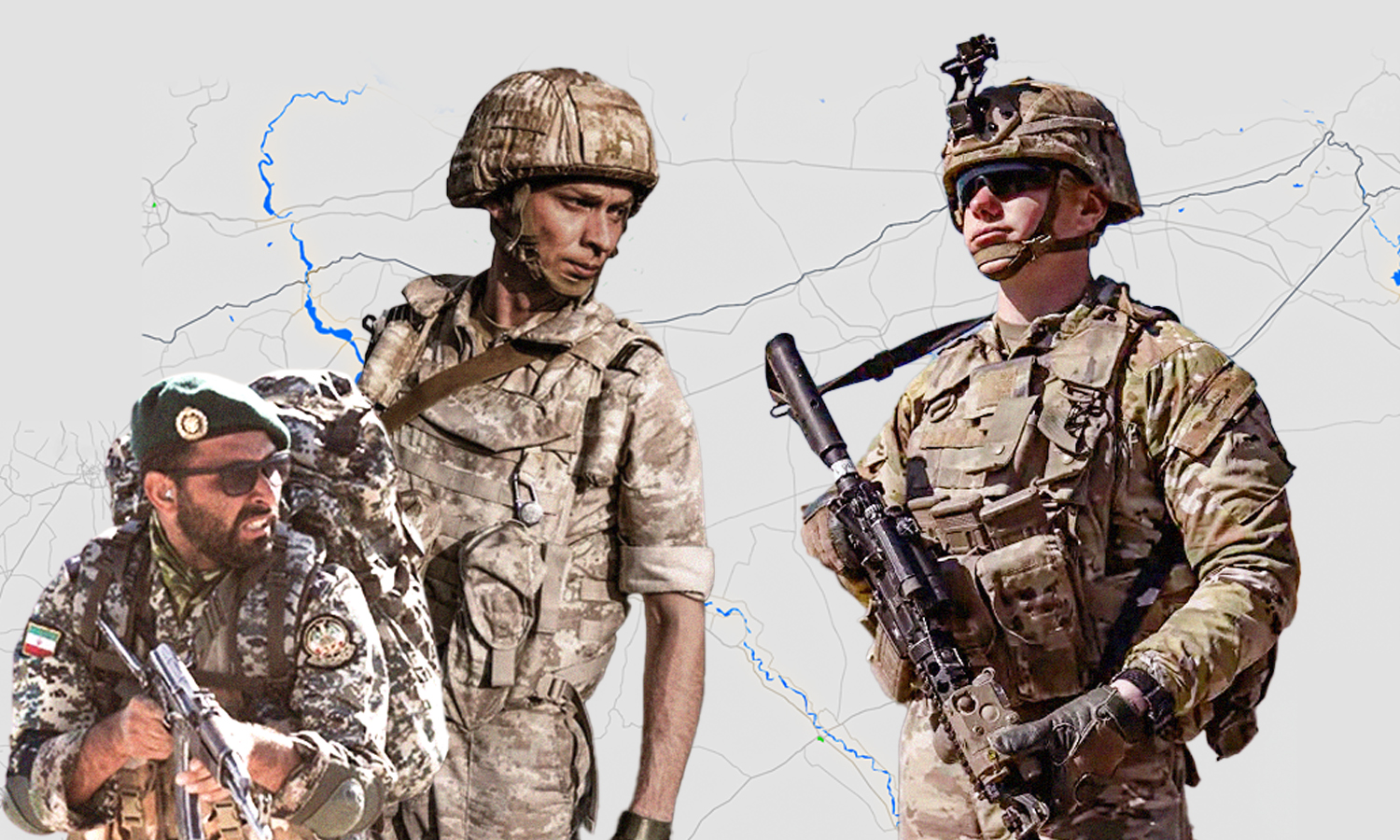
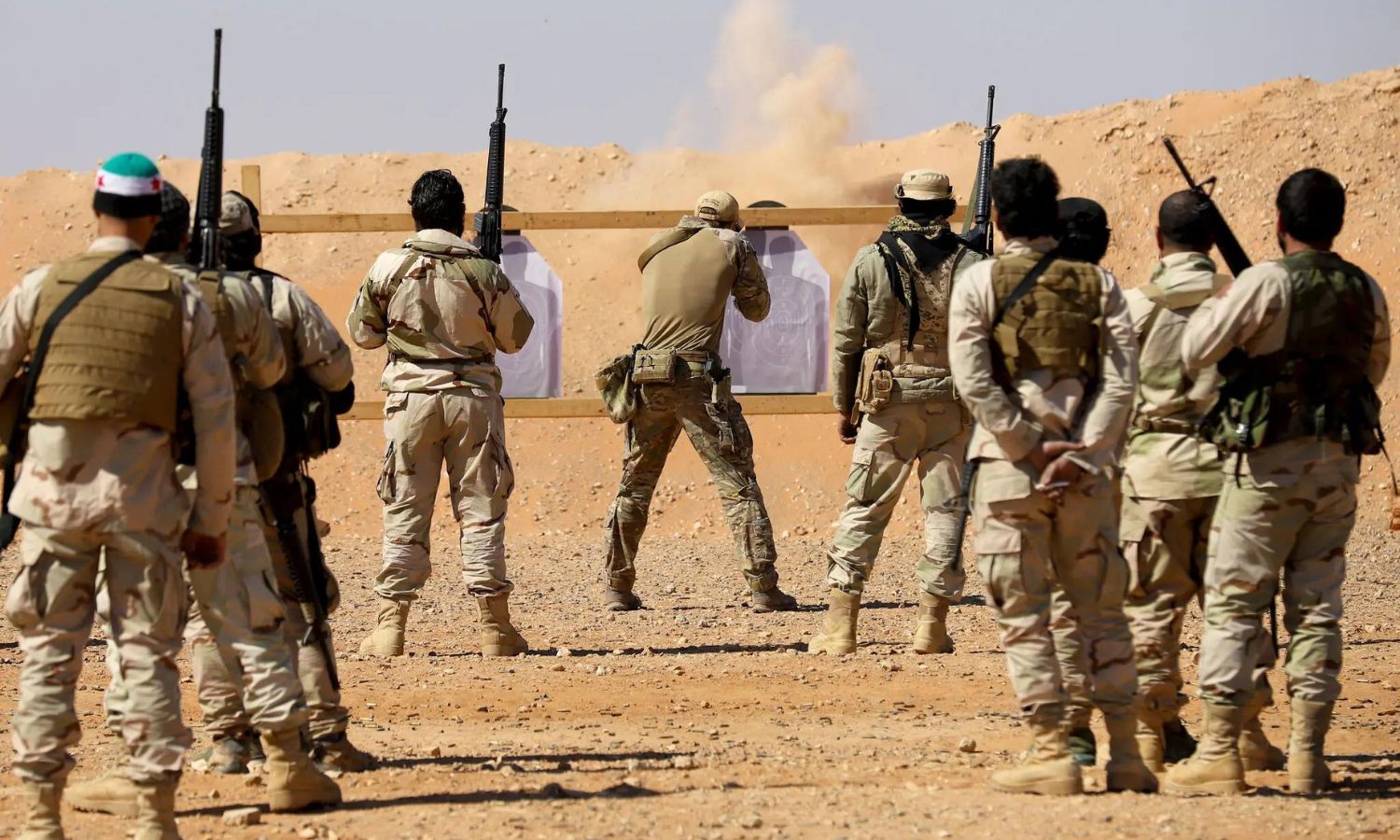
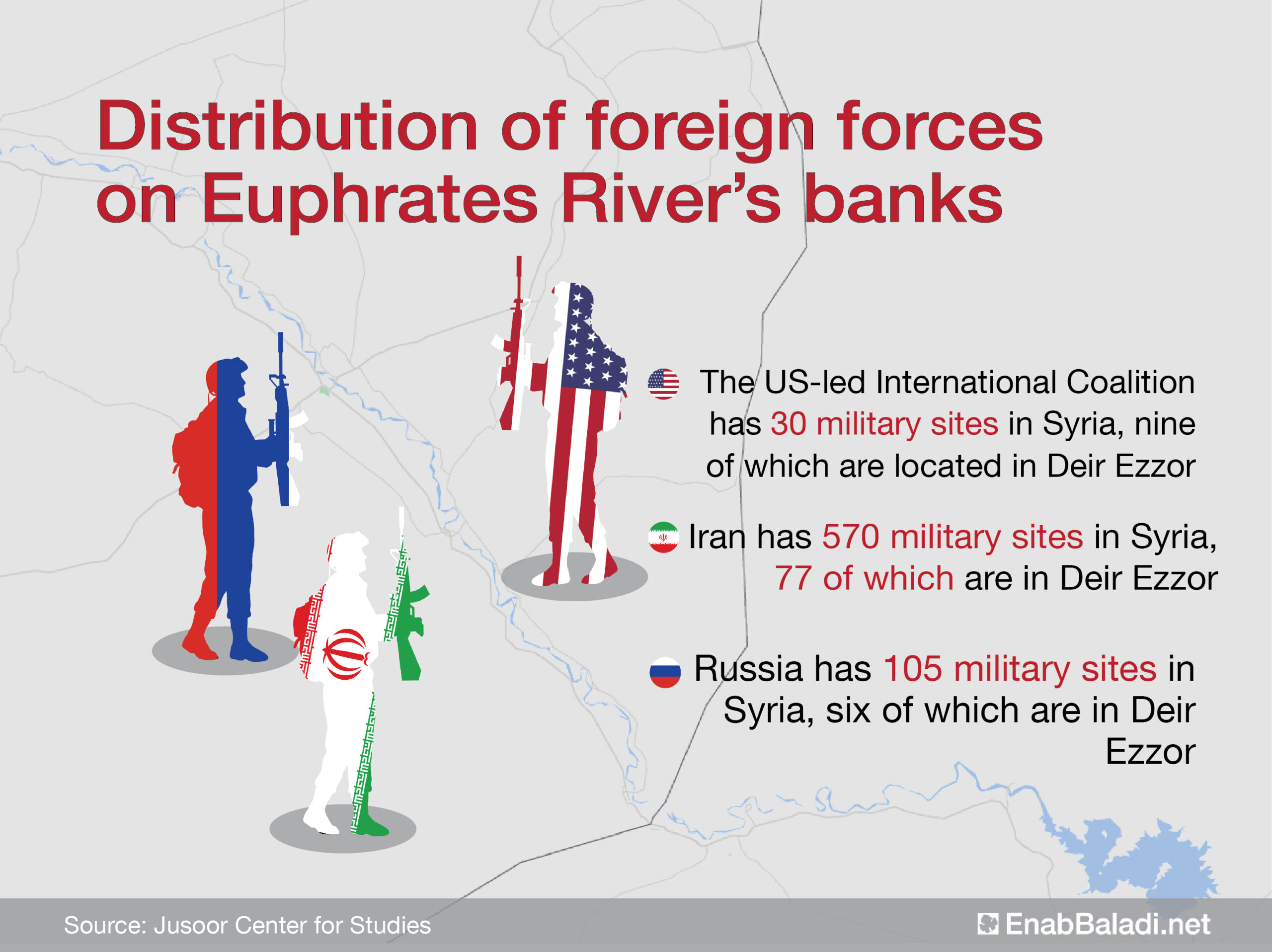


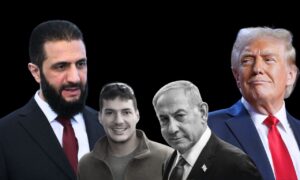
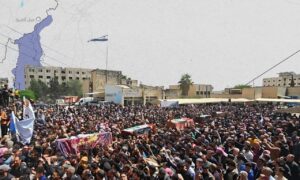



 More In-Depth
More In-Depth